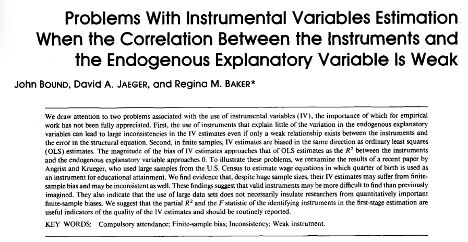
With my amazing grad student Tianshu Lyu www.tianshulyu.com, who is on the market. You should hire him!
paulgp.com/papers/finan...


With my amazing grad student Tianshu Lyu www.tianshulyu.com, who is on the market. You should hire him!
paulgp.com/papers/finan...












The easiest way to see this is by realizing this setting with many examiners is exactly a many-weak-instrument setting, a classic econometrics problem.

The easiest way to see this is by realizing this setting with many examiners is exactly a many-weak-instrument setting, a classic econometrics problem.


Here's what we found and what you should do differently.

Here's what we found and what you should do differently.
This article is targeted for the Journal of Economic Perspectives, and so we wrote it with the goal of being accessible to a wide range of users, including advanced undergrads!🧵
arxiv.org/abs/2511.03572

This article is targeted for the Journal of Economic Perspectives, and so we wrote it with the goal of being accessible to a wide range of users, including advanced undergrads!🧵
arxiv.org/abs/2511.03572

www.barbarabiasi.com/uploads/1/0/...

www.barbarabiasi.com/uploads/1/0/...
academic.oup.com/ej/advance-a...

academic.oup.com/ej/advance-a...
www.reddit.com/r/spaceporn/...

www.reddit.com/r/spaceporn/...


Basically trying do MR's daily posts but without all the annoying snark...

Basically trying do MR's daily posts but without all the annoying snark...


